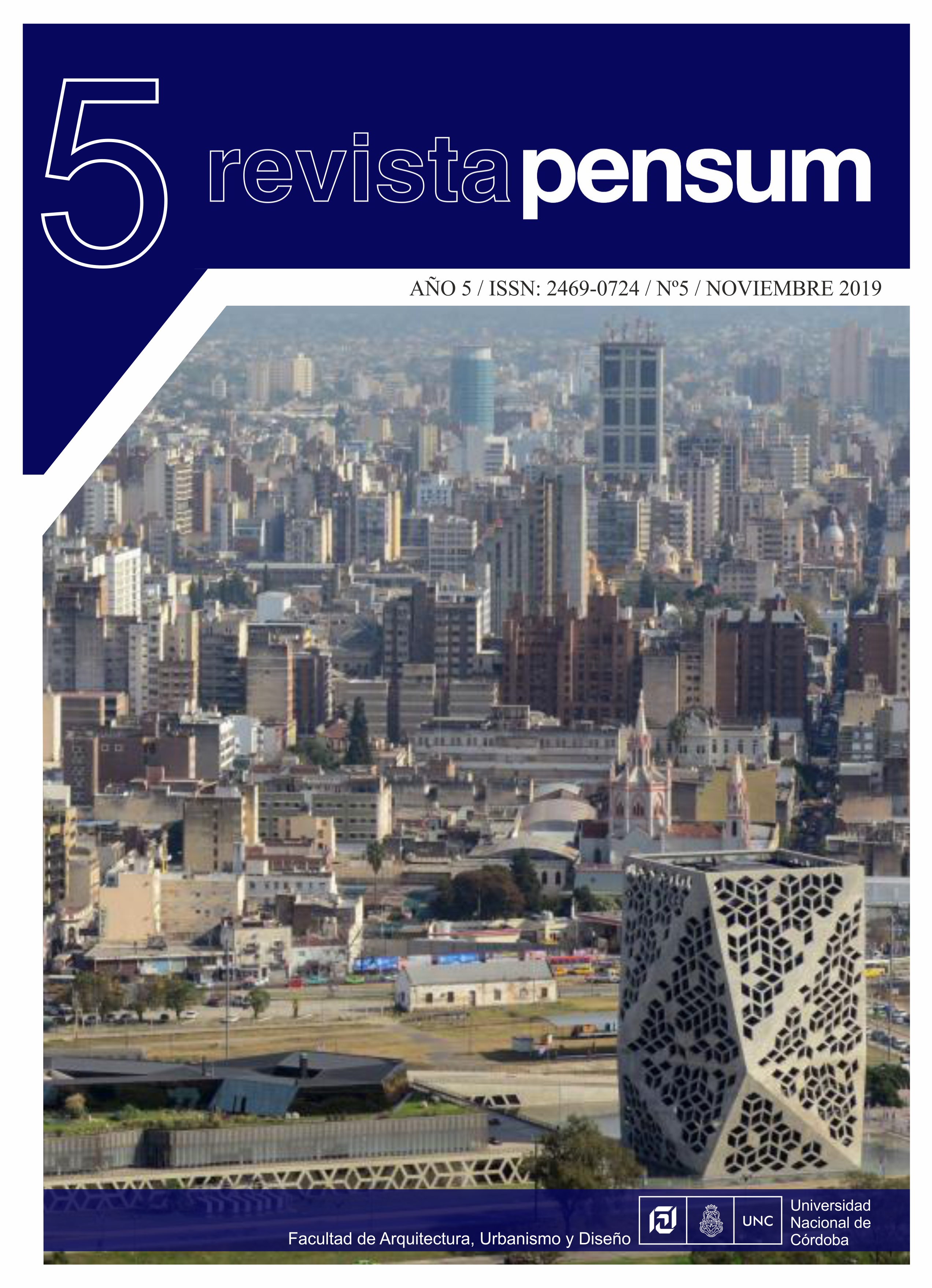Past-present articulation in historical downtown public spaces. The case of Naples
DOI:
https://doi.org/10.59047/2469.0724.v5.n5.26303Keywords:
Urban public space, historic downtown, cultural heritage, intervention strategies, past/presentAbstract
This paper reflects on intervention strategies in public spaces located on the historic downtown of cities, from now on CH, and how those actions that incorporate new architecture, seek through public space the articulation between society and cultural heritage (historical, archaeological, architectural, urban, artistic), proposing the latter as a central and articulating element that the whole society can afford, and thus, bringing the past to the present. Having stated this, the case of intervention is presented: the metropolitan metro network in the CH of the city of Naples. This city and in particular, its CH, is a clear example of obvious public space deficiencies, a shared trait with many Latin American cities. Therefore, the problem of its intervention is complex and shouldnt be ignored. This document is organized around three triggering questions pursuing a dual purpose. Firstly, we elaborate a brief theoretical approach involving the implications of CH public spaces. Then, we describe the case study unit. Finally, we reflect on outcome of the articulation between urban archeology of public space and new architectural interventions. The methodology is exploratory involving the analysis and discussion of specialiazed bibliography that adresses the delimitation of the theoretical basis for this proposal and qualitative fieldwolk in Naples University, Italy.
References
Archemail (2008). I ritrovamenti archeologici nei cantieri della metro a Napoli. Publicado el 26 de julio de 2008. Consultado el 25 de abril de 2014. Recuperado en: https://web.archive.org/web/20110824075826/http://www.archemail.it/napoli.htm
Borja J. y Muxi, Z. (2003). El espacio público: ciudad y ciudadanía. Electa, Barcelona, España.
Cangiano, A. (2011). Mura romane dagli scavi del metrò - Spunta l'ippodromo di Neapolis, Corriere del Mezzogiorno. Publicado el 5 de julio de 2011. Consultado el 4 de mayo de 2014. Recuperado en: https://corrieredelmezzogiorno.corriere.it/napoli/notizie/arte_e_cultura/2011/5-luglio-2011/mura-romane-scavi-metro-spunta-ippodromo-neapolis-1901020655377.shtml
Carrión Mena, F. (2008). Centro histórico: la polisemia del espacio público. En Centro-h, Revista de la Organización Latinoamericana y del Caribe de Centros Históricos No. 2.
Corbi, M. (2016). Le stazione dell’arte di Napoli, Gestione di un patrimonio diffuso di arte pubblica. Gestione Patrimonio Artistico, Azienda Napoletana Mobilitá. Recuperado en: www.comune.napoli.it
Farace, E. (s.f). Ritrovamenti ceramici a Castelnuovo e Piazza Dante. Tesi di laurea. Recuperado en: http://www.storiadellarte.com/pagine/tesi.PDF
Gehl, Jan (2011). El arquitecto de las personas. Entrevista a Jan Gehl, publicado en la Revista digital Yorokobu. Recuperado en: https://www.yorokobu.es/el-arquitecto-de-las-personas/
Giampaolo, D. (2012). Scheletro di época medievale ritrovate in cantieri metro. Repubblica.it. Publicado el 27 de febrero de 2017. Consultado el 10 de septiembre de 2018. Recuperado en: https://napoli.repubblica.it/cronaca/2012/05/25/news/scheletro_di_epoca_medievale_ritrovate_in_cantiere_metro-35896804/
Herce Vallejo, M. (2001). Instrumentos de transformación del espacio urbano; presencia y operatividad en América Latina. La ciudad construida. Editor: Fernando Carrión Mena. Urbanismo en América Latina. Quito, FLACSO - Junta de Andalucía - Municipio del Distrito Metropolitano de Quito, Ecuador.
Jouakim, F. (2008). Piazza Bovio, spunta una muraglia bizantina: difficoltà nei lavori. Bondi nominerà un «tutor» il primo agosto. Il Mattino, Napoli. Publicado el 26 de julio de 2008. Consultado el 4 de mayo de 2014. Recuperado en: http://www.patrimoniosos.it/rsol.php?op=getarticle&id=44060
Muxí, Z. (2004). Ponencia presentada en la mesa: El espacio público y el tiempo público. Centros Históricos: El corazón que late (2004). Publicación del Foro Internacional de Arquitectura, Córdoba, España.
Ortiz Guitart, A. (2006). Regeneración urbana, espacio público y sentido de lugar. Un caso de estudio en la Ciudad de México. Revista Provincia, 15, enero-junio, 2006, Universidad de los Andes Mérida, Venezuela.
Pirone, L. (2012). Napoli, inaugurata la stazione Toledo della Linea 1 (Napoli collegamento interrotto, Il Levante, Napoli. Publicado el 13 de abril de 2012. Consultado el 20 de marzo de 2014.
Santos, M. (1996). Metamorfosis del espacio habitado, Oikos Tau, Barcelona, España.
Sepúlveda Voulliéme, D. (2004). Espacio público y urbanidad. Ponencia presentada en la mesa El espacio público y el tiempo público. Centros Históricos: El corazón que late. (2004). Publicación del Foro Internacional de Arquitectura. Córdoba, España.
Silva-Roquefort, R. y Muñoz, F. (2019). Ergonomía urbana como estrategia adaptativa del espacio público. Un análisis crítico al paradigma urbano actual. Bitácora Urbano Territorial, 29 (2), p. 159-168. Recuperado en: https://revistas.unal.edu.co/index.php/bitacora/article/view/70141/pdf
Zagaria, C. (2012). Opere d'arte ispirate al mare nella stazione Toledo. La Repubblica, Napoli. Publicado el 12 de abril de 2012. Consultado el 7 de mayo de 2014. Recuperado en: https://napoli.repubblica.it/cronaca/2012/04/12/news/opere_d_arte_ispirate_al_mare_nella_stazione_toledo-33186648/
Downloads
Published
Issue
Section
License

This work is licensed under a Creative Commons Attribution-ShareAlike 4.0 International License.
Authors who publish in this journal agree to the following terms:
a. Authors retain copyright and guarantee to the journal the right to be the first publication of the work as well as licensed under a Creative Commons Attribution-ShareAlike 4 license.
b. Authors may separately establish additional agreements for non-exclusive distribution of the version of the work published in the journal (e.g., placing it in an institutional repository or publishing it in a book), with an acknowledgement of its initial publication in this journal.
c. Authors are permitted and encouraged to disseminate their work electronically (e.g., in institutional repositories or on their own website) before and during the submission process, as this may result in productive exchanges, as well as earlier and greater citation of published work (See The Effect of Open Access).
d. 4.0 International Creative Commons Attribution-ShareAlike 4.0 License.












